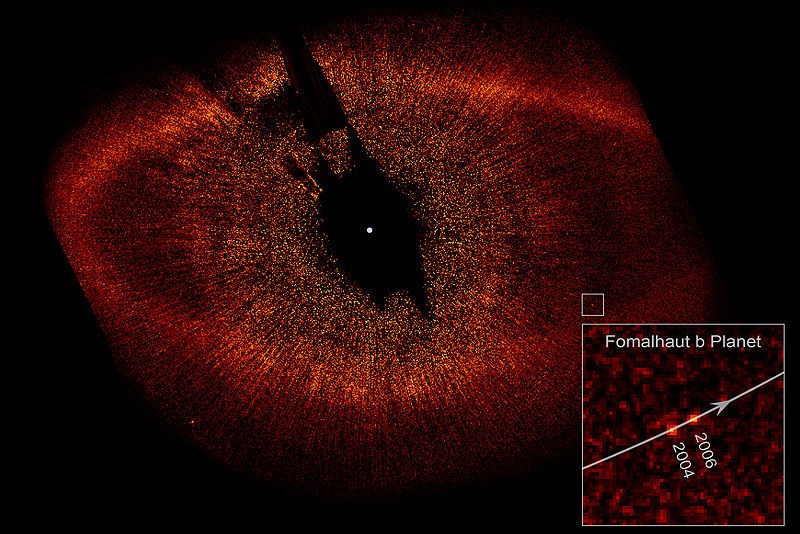 |
| Fomalhaut as seen from Hubble. |
The science of Fomalhaut (pro: foam-a-lot) is pretty cool. Recently, professional astronomers going over a series of 2005 photos from the Hubble telescope found that the young star Fomalhaut has a planet that was formed by the extensive debris ring around it. That's the first exoplanet found.
It's very hard to see the debris ring, from Earth, even with the biggest and brightest telescopes, but Hubble can. But it's easy to find the star because it seems like it's out there all by itself in the Southern sky in a region that is pretty dark and otherwise not too interesting. It's often called the "Ocean in the Sky" and traditionally, it's constellations take on marine-grade names. Fomalhaut is a bastardization of the Arabic for "Mouth of the Fish."
 |
| Fomalhaut is kind of out in the middle of nowhere, but it's the third brightest star in the night sky. If you can find the Square of Pegasus, you can find Fomalhaut. |
It's interesting to scientists because it shows where planets actually come from.
It's visible from all latitudes in the US lower 48 (and Hawaii), rising to about 30 degrees in the southern states and just peeking over the horizon in the northern tier. It becomes visible in August but is usually obscured by haze until November. That's why it's often, and historically called the Autumn Star.
If you can see the Great Square of Pegasus, you can find Fomalhaut. Find the two stars on the western side of the Square, draw a line through those stars and continue south through Aquarius about 45 degrees and you’ll find it. If you’re looking for nearby stars for guidance you won’t find any. Fomalhaut exists as the single bright light in a field of dim stars, hence it's nickname, the Loneliest Star.
The star is a A3 on the spectrum, meaning blue or blue-white. Because it’s low on the sky it may look a bit reddish (for the same reason the Moon looks red when it’s near the horizon — the atmosphere disperses the blue light making the object appear to be redder color than it is). It’s the 18th brightest star in the sky, not including the Sun and easily qualifies as a member of the first magnitude club.
The Greeks saw this star as a mixture of Mercury and Venus, and hence gave to it the same general interpretation as Spica: “learned, philosophical, eloquent, creative, clever, artistic, pleasure-loving, practical, high-minded and successful, but sometimes fickle or promiscuous.” The Greeks said that Fomalhaut was the mouth of the fish – Piscis Austrinus – into which the water jug of Aquarius is poured. The Hindu interpretation of Fomalhaut is different and based on the nature of god Varuna: mystical, reclusive, solitary, sometimes scientific and sometimes meditative, secretive, moody, depressive, and possessed of healing talents.
Read more: Society for Popular Astronomy, EarthSky.org, Houston Astronomical Society, Kenneth Johnson, astrologer